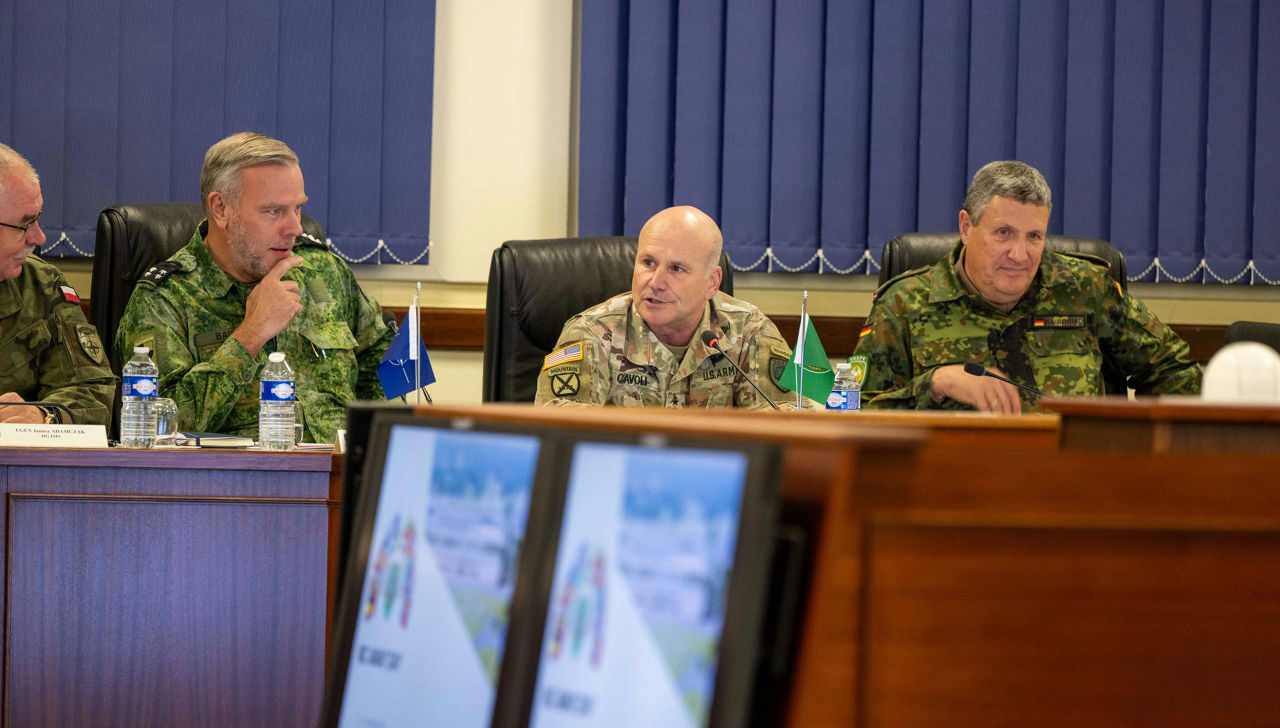Download NATO’s broadcast-quality video content free of charge

Log in
NATO MULTIMEDIA ACCOUNT
Access NATO’s broadcast-quality video content free of charge

Check your inbox and enter verification code
You have successfully created your account
From now on you can download videos from our website
Subscribe to our newsletter
If you would also like to subscribe to the newsletter and receive our latest updates, click on the button below.
Enter the email address you registered with and we will send you a code to reset your password.
Didn't receive a code? Send new Code
The password must be at least 12 characters long, no spaces, include upper/lowercase letters, numbers and symbols.
Your password has been updated
Click the button to return to the page you were on and log in with your new password.
Supreme Allied Commander Europe (SACEUR)
Updated: 04 July 2025
The Supreme Allied Commander Europe (SACEUR) is one of NATO’s two strategic commanders and is at the head of Allied Command Operations (ACO). SACEUR is responsible to NATO’s highest military authority – the Military Committee (MC) – for the conduct of all NATO military operations.
- The Supreme Allied Commander Europe – or SACEUR – is one of NATO’s two strategic commanders.
- SACEUR is at the head of Allied Command Operations (ACO) and, as such, is responsible to the Military Committee (MC) for the conduct of all NATO operations.
- Traditionally, the position is held by a US commander, who is dual-hatted as Commander of the US European Command.
- The current SACEUR is General Alexus G. Grynkewich, United States Air Force, who took up his functions on 4 July 2025.
- Command over ACO is exercised from the Supreme Headquarters Allied Powers Europe (SHAPE) at Casteau, near Mons, Belgium.
Role and responsibilities
SACEUR is responsible for the overall command of NATO military operations. He conducts the necessary military planning for operations, including the identification of forces required for the mission and requests these forces from NATO countries, as authorised by the North Atlantic Council and as directed by the MC. SACEUR analyses these operational needs in cooperation with the Supreme Allied Commander Transformation (SACT).
The Supreme Commander makes recommendations to NATO's political and military authorities on any military matter that may affect his ability to carry out his responsibilities. For day-to-day business, he reports to the MC, composed of Military Representatives for Chiefs of Defence of NATO member countries. He also has direct access to the Chiefs of Defence and may communicate with appropriate national authorities, as necessary, to facilitate the accomplishment of his tasks.
In the case of an aggression against a NATO member state, SACEUR, as Supreme Commander, is responsible for executing all military measures within his capability and authority to preserve or restore the security of Alliance territory.
SACEUR also has an important public profile and is the senior military spokesperson for ACO. Through his own activities and those of his public information staff, he maintains regular contacts with the media. He also undertakes official visits to NATO countries and countries where NATO is conducting operations, or with which NATO is developing dialogue, cooperation and partnership.
Other tasks that come under the responsibility of the Supreme Allied Commander Europe include:
- contributing to stability throughout the Euro-Atlantic area by developing and participating in military-to-military contacts and other cooperation activities and exercises undertaken with partner countries;
- conducting analysis at the strategic level designed to identify capability shortfalls and to assign priorities to them;
- managing the resources allocated by NATO for operations and exercises; and
- in conjunction with Allied Command Transformation (ACT), developing and conducting training programmes and exercises in combined and joint procedures for the military headquarters and forces of NATO and partner countries.
Selection process
SACEUR is appointed by the US President, confirmed by the US Senate and approved by the North Atlantic Council, NATO’s highest political decision-making body.
There is no assigned term for SACEUR. It has ranged from one to eight years.
Evolution of the function
On 2 April 1951, the five-star general in the US Army who served during the Second World War, General Dwight D. Eisenhower, became the Alliance’s first SACEUR. This post, together with that of the Supreme Allied Commander Atlantic (SACLANT), was created before that of the Secretary General’s, which followed a year later in March 1952.
SACEUR had the responsibility of safeguarding the area extending from the northern tip of Norway to southern Europe, including the whole of the Mediterranean, and from the Atlantic coastline to the eastern border of Türkiye.
Following the overall process of reform in 2002, when the Supreme Allied Commander Atlantic (SACLANT) became the Supreme Allied Commander Transformation (SACT), the Supreme Allied Commander Europe did not change name but saw his responsibilities extended to cover all NATO operations, regardless of their geographical location.




